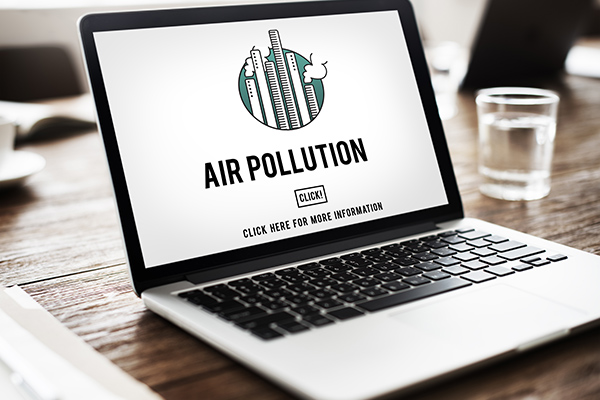Following the Janta Curfew on March 22, the Indian government imposed a three-week lockdown on the country starting March 24 in an attempt to combat the deadly Coronavirus. All citizens are asked to stay home; public transport has been suspended; construction work has been stopped, and shops and factories are closed temporarily. As India is left at a standstill in these grim times, there are little rays of sunshine peaking as the skies are clearing up in the most polluted cities across the country.
According to a 2019 World Air Quality Report, around half of the 50 most polluted cities in the world were in India – Delhi being at the top of the list with its Air Quality Index reaching up to 200.7 in Nov 2019, which qualifies as ‘Very Unhealthy’. As of today, Air Quality Index Delhi has sunk to 75, a level considered ‘Moderate’. Relevant data revealed by the Central Pollution Control Board (CPCB) shows that in the first week of lockdown itself, the pollution level in Delhi was reduced by almost 71%.
In better news, the national capital is not the only city in India which is breathing easier today. As on March 29, 2020, 60 cities in India fell under ‘Satisfactory’ and 31 under ‘Good’ AQI category while no city was recorded with ‘Poor’ AQI values. According to the latest data released by IQAir, the list of 20 most polluted cities in the world now has only two Indian cities – a number that was 14, last year.
In this awful crisis that the world is dealing with, the improving pollution level in India is considered to be a silver lining. This is clearly a dramatic result of the reduction in vehicular traffic and closing of factories and power plants – two major sources of harmful pollutants released in the air. The sudden fall in pollutants has allowed people to see clear blue skies instead of the usual heavy grey smog.
Recent news has also shown a massive shift in water pollution over the last few days with the waters of Yamuna River appearing to be clean and transparent, not frothed, as was the case in 2019, mainly due to the closure of the industrial units in NCR. The skyscrapers are no more shrouded in smog and people have reported that they can spot stars in the night, which hasn’t happened in years now.
Similar climate changes have been witnessed in other parts of the world too. The air pollution levels in Italy dropped significantly last month; the canals in Venice cleared up revealing all the fishes living in it. Parts of China have also shown a drastic fall in pollution levels as the country came to a halt.
While this is no reason to celebrate considering the grave situation the world is grappling with, it is a lesson that India and the rest of the world badly need. This might not be the most ideal way to bring down air pollution but what it proves is that it is manmade. So, once things are under control, India needs to move towards renewable energy faster and invest in a cleaner, healthier future for all.




























